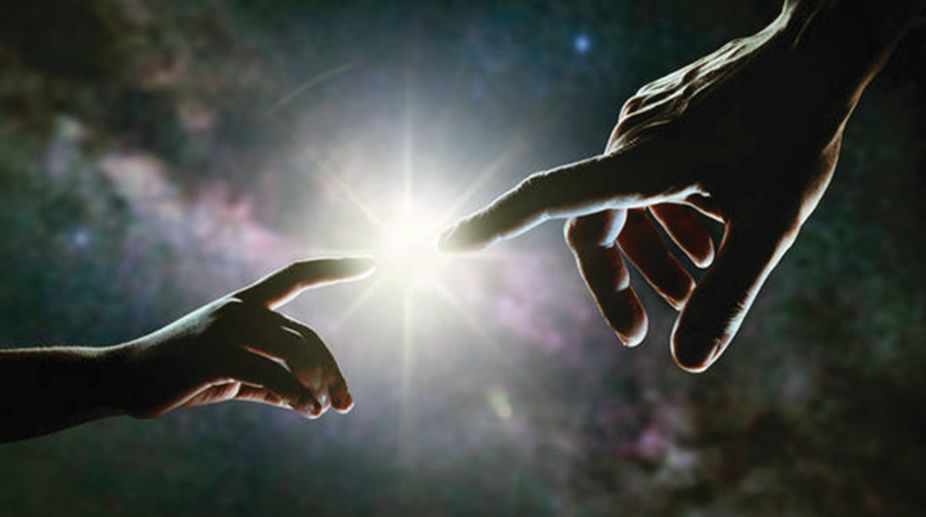
It has long famously been observed that God is as much a self-reflection of man as man is the image bearer of God. The accusation that God is nothing more than a projection of man’s own image is only mildly compelling. However it is not actually obvious that the tens of thousands of gods are a result of man making God in his own image, especially not prior to our present postmodernism. It is true that most of those gods have certain anthropomorphic features, but upon close examination it becomes quite clear that these gods are not merely the result of man deifying his preferences. These gods are brutal, demanding, and unpredictable. They cast their peoples into darkness and fear, they don’t cradle them in the comfort that would result from enshrining one’s own assumptions. But if man didn’t create these gods in his own image, then in what image are they made? In what mold were they cast?
The new atheists, like Richard Dawkins, snarkily argue that a monotheist is only infinitesimally less of an atheist than an actual atheist. They point out that a monotheist is one who does not believe in 9,999 gods, while an atheist is one who does not believe in 10,000 gods. While this is a humorous comedic bit, it is completely facile; for two reasons. First, it glosses over the infinite mathematical distance between 0 and 1. The distance between ‘something’ and ‘something more’ is finite. The distance between ‘nothing’ and ‘something’ is infinite. Darwinism and its philosophical reverberations consistently ignore this reality. Second, a pantheon full of fake gods no more disproves the existence of a true God than a black market full of fake Nikes disproves the existence of the genuine article. On the contrary, one could easily deduce from a survey of all the Nipes, Niqes, Nides, Nites, and Nizes that there is a genuine article that all these are imitating. Even if you can’t see the bullseye, it is safe to assume that it exists by the grouping of the bullet holes. When we look at the universal fact—across history and time—of the belief in the Divine, the explanation that a God must exist has far more explanatory power than that one must not exist.
Where did all these cultures, as far back as we have recorded history, get the notion of the Divine? In what image did they create their gods? Unlike their postmodernists ‘betters’, they obviously did not create them in their own image; and Christians don’t serve the gospel well by glombing that explanation on to their critique of pagan religion. These gods were created in the image of God. The image of God that man saw in his own deep sense of the divine and that he perceived in that same shared sense in his fellow man. The gods were not an attempt to exalt man but to sift out of man the divine spark that obviously was in man but did not belong to man. Granted, they all got it quite wrong. If Christians, with specific and direct revelation from God, are observed to be only “seeing through a glass darkly”, then how should we characterize those without any glass at all? Well, Paul puts it bluntly: They are blindly flailing around in the dark, reaching out, trying desperately to grasp what they inherently know must be out there. They are ignorantly grasping for ‘The Unknown God’.
What is interesting about these pagan attempts at recreating the God that their arrogant, self-destructive ancestors had evicted from their minds, their religion, and their culture is both how human and, at the same time, how ‘unhuman’ those attempts are. But even more compelling than that is how much more so the true God is. He is both more human and more ‘unhuman’ than any false god was ever imagined to be. Before we make too much of the pagans creating gods in their own image, we might want to consider that no religion has ever even dared suggest a god more human than the Christian God, who not only took on the appearance of man, but the very flesh, mind, emotions, and weaknesses of humanity. Born into the world through the same gory and glorious canal of agony, sweat, blood, and placenta. And yet we dismiss the pagan Divine effigies because of their ‘humanness’? Absolutely, yes! But not because they are too human. We dismiss them because they are not nearly human enough. On the unhuman/human binary scale they are a 0; Jesus is a 1.
But even while the true God is more human than any pagan god dared to be, he is also more ‘unhuman’ than any pagan god was ever dreamed of achieving. Not apart from his humanity, nor in spite of his humanity; but in his humanity and because of his humanity. How much more unlike man could God be than to become man and not sin? We can look at his birth, his life, and his death and think, “He is just like me!”. And yet at the same time we look at his death, his life, and his birth and conclude, “He is nothing like me!” He is at once the lowly gardener and the magnificent Risen Lord. He is simultaneously the blinding, inaccessible, transfigured Almighty and the welcoming, comforting, Friend of sinners. He alone spans the infinite between 0 and 1.

